Definition- The accuracy limit factor (ALF) of a current transformer (CT) is a parameter that indicates the highest multiple of the rated current at which the transformer can maintain its specified accuracy.
There are three types of current transformers widely used in an electrical network for protection and metering purposes.
The metering class CT is used for the measurement of electrical parameters. The protection class current transformer “P class CT” is used for the protection of the electrical network.
The protection class CT “PS class CT” is used for differential protection of transformer, motor, and generator. The metering class CT is intended to maintain its measurement accuracy during normal electrical network operation; the accuracy during the fault condition does not matter for metering class CT.
However, the metering class CT should have an adequate instrument safety factor(ISF) so that the equipment connected to it remains safe during fault conditions. The metering class CT saturates during fault and thus protects the measuring instruments connected to it. However, in the case of a fault in an electrical network, the accuracy limit factor for protection class CT is paramount.
What is the Accuracy LIMIT Factor(ALF) of CT?
The protection class CT saturates at higher secondary currents than the metering class CT. Its primary function is to provide protection during fault currents. At fault currents, the protection class CT must not saturate; otherwise, it will not provide protection to the electrical network. Also, the protection class CT should maintain its rated accuracy at fault currents to have intact protection.
The accuracy limit factor (ALF) of the CT is defined as the ratio of the rated accuracy limit primary current to the rated primary current. The protection class CT is marked as 5P10 or 5P20. Here, P stands for protection class, 20 is the accuracy limit primary current, and 5 stands for composite error of the CT when the accuracy limit current flows through the primary of the current transformer. The specifications of the metering and protection class CT are given below.
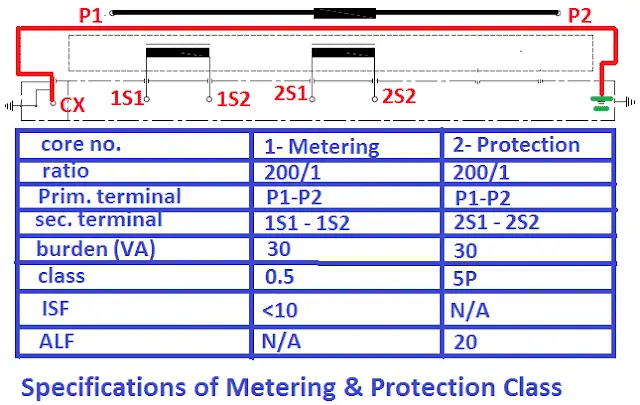
In the above-given data, CT is 5P20 with CTR 200/1. The ALF is 20. The CT accuracy class is 5. This means that if 20 times the rated primary current(4000 amperes) flows in the primary at the time of fault, the CT reads the current with 5 % accuracy. This factor (In x 20)20 is called the accuracy limit factor(ALF).
If the current in the primary of the CT exceeds 20 times the primary rated current, the secondary current may become distorted, and the protection function may not be guaranteed. Therefore, it is very important to select the ALF of CT correctly for reliable protection of the electrical networks.
The actual accuracy limit factor(ALF) of CT may differ from the rated ALF. The accuracy limit factor (ALF) depends on;
- The internal burden of CT secondary coil
- Actual burden of CT
Calculation of Actual ALF of CT
The actual accuracy limit factor of CT can be calculated using the following mathematical formula.
Formula of CT ALF
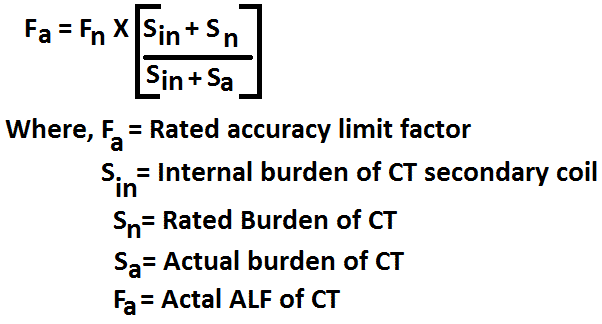
Solved Problem on Accuracy Limit Factor of CT
A protection class CT is rated 200/5,5P20,15 VA. The CT internal secondary resistance is 0.08 Ω, and the secondary burden (including wires and relay) is 0.118 Ω. Calculate the actual accuracy limit factor of CT.
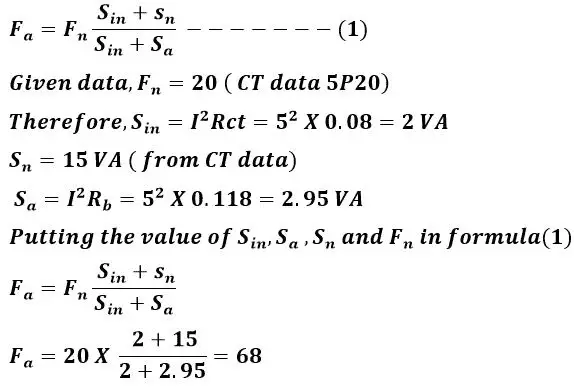
Effect of higher CT burden on ALF of CT
The actual ALF of CT is 68. The ALF of CT changes with a change in the burden. Let us take the same example with different burdens. Let the CT burden be 0.335 Ω. The actual ALF can be calculated as follows.
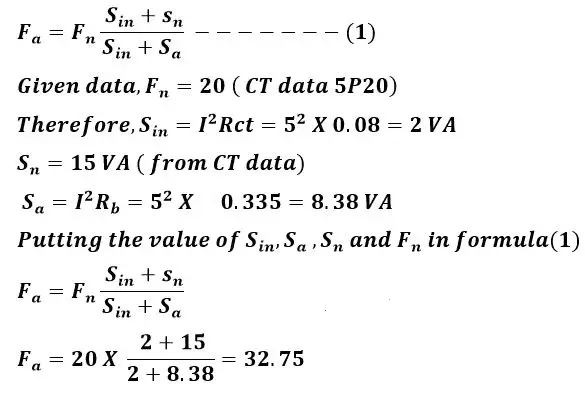
The actual ALF reduces with the increase in CT burden. A smaller CT burden leads to a higher accuracy limit factor, and the CT can give a reliable reading even at higher ALF.
Effect of lower CT burden on ALF of CT
Now, let the CT burden be 0.005 Ω. The actual ALF of CT can be calculated as follows.
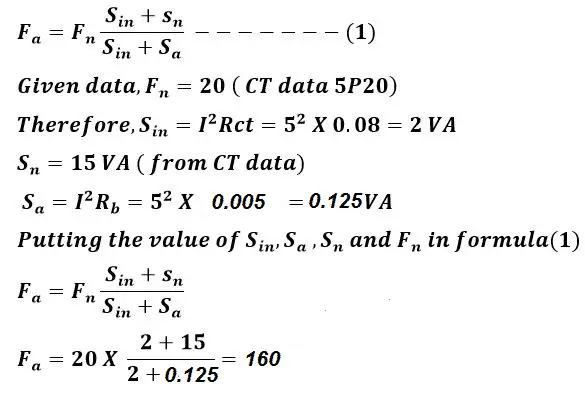
Thus, the CT ALF increases with a decrease in CT burden. The graph between CT burden and actual CT ALF is shown below.
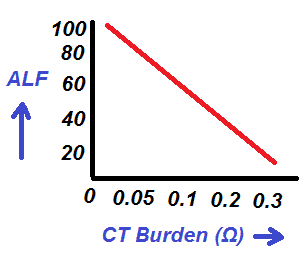
Therefore, the CT burden must be as low as possible to get a better accuracy limit factor of CT.
Very well described. Thanks a lot for doubt clarification.
Supper described… For bettt. Understanding
Thanks for sharing knowledge with others 🙏